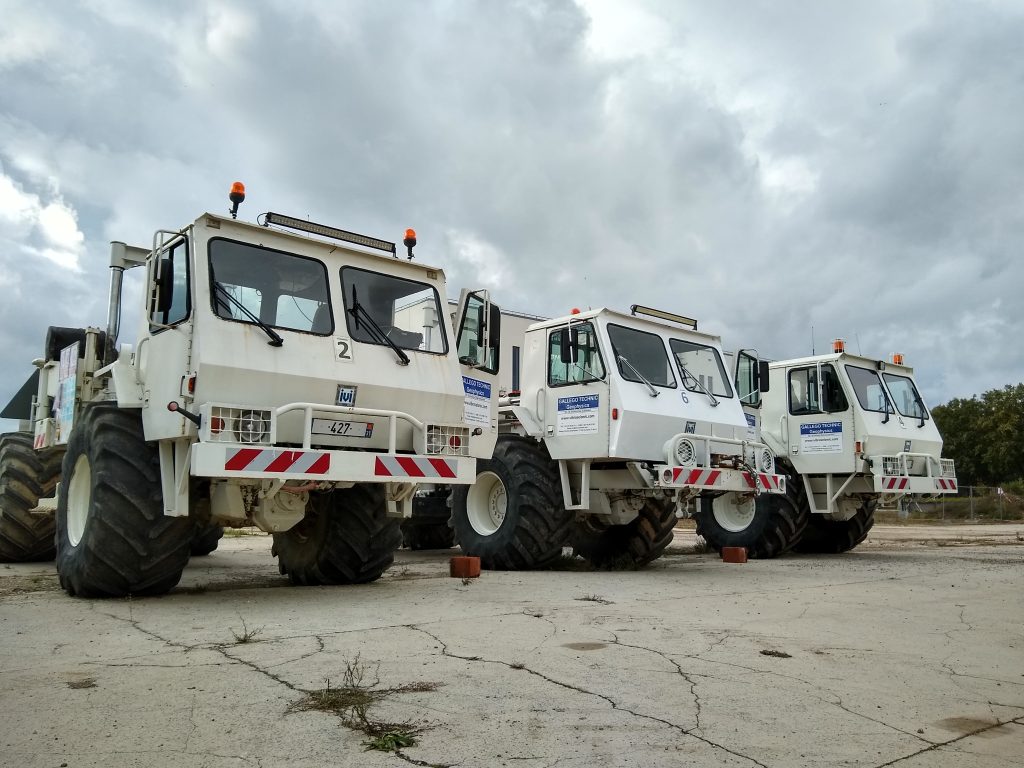VITO has launched a new seismic campaign exploring geothermal potential in Lommel, Belgium

If the region of Lommel in Belgium qualifies for geothermal energy utilisation for heating networks, Belgian organisation VITO has started a seismic campaign as part of the Interreg project “Roll-out of Deep Geothermal Energy in N-W Europe”.
The Flemish institute for technological research, Vlaamse Instelling voor Technologisch Onderzoek or VITO, reports having started a new seismic campaign in the region of Lommel, a municipality and city in the Belgian province of Limburg.
With geothermal heat, hot water (up to 150 °C) is extracted from the deep subsoil and the cooled water is re-injected in the deep subsoil. It is renewable energy, which is constantly available, independent of fluctuations in the price of fossil fuels and can be used to supply heat to residential areas and industry via heat networks. If the water is very hot, the power station can also produce green electricity. In the countries surrounding us, this sustainable energy source is already part of the energy mix, e.g. in the Province Zuid-Holland, in Munich/ Germany and Paris/ France.
Based on existing data from the subsoil, geologists have calculated that in the Lommel area, at a depth of 4 to 5 km, there are earth layers that are eligible for geothermal heat. However, more deep subsoil data are needed in order to correctly assess the potential. If that result is positive, then a geothermal power station could be considered.
Seismic measurements can be used to gather more information about the structure of the subsoil. The measurements are carried out with specially equipped trucks, so-called vibration trucks. The vibrations are recorded with small, passive vibration meters along the route. The campaign will start on 6 October with a test measurement at the Balmatt site, to effectively start from 8 October, from VITO eastwards along the canal. The measurements will be carried out by the specialised French company GTG. Besides Lommel, there are also measurements in Pelt, Mol, Dessel, Balen and Bergeijk and Valkenswaard (NL). The measuring process in the Netherlands has been determined in consultation with project partner EBN, in order to link up with their research within DGE-ROLLOUT and SCAN.
The measurement campaign in Lommel is part of the European Interreg project DGE-ROLLOUT, in which ten companies and research institutes are participating. For the research in North Limburg, the province of Limburg and the climate company Nuhma are also contributing financially.
With geothermal heat, hot water (up to 150 °C) is extracted from the deep subsoil and the cooled water is re-injected in the deep subsoil. It is renewable energy, which is constantly available, independent of fluctuations in the price of fossil fuels and can be used to supply heat to residential areas and industry via heat networks. If the water is very hot, the power station can also produce green electricity. In the countries surrounding us, this sustainable energy source is already part of the energy mix, e.g. in the Province Zuid-Holland, Munich and Paris.
Based on existing data from the subsoil, geologists have calculated that in the Lommel area, at a depth of 4 to 5 km, there are earth layers that are eligible for geothermal heat. However, more deep subsoil data are needed in order to correctly assess the potential. If that result is positive, then a geothermal power station could be considered.
Seismic measurements can be used to gather more information about the structure of the subsoil. The measurements are carried out with specially equipped trucks, so-called vibration trucks. The vibrations are recorded with small, passive vibration meters along the route. The campaign will start on 6 October with a test measurement at the Balmatt site, to effectively start from 8 October, from VITO eastwards along the canal. The measurements will be carried out by the specialised French company GTG. Besides Lommel, there are also measurements in Pelt, Mol, Dessel, Balen and Bergeijk and Valkenswaard (NL). The measuring process in the Netherlands has been determined in consultation with project partner EBN, in order to link up with their research within DGE-ROLLOUT and SCAN.
The measurement campaign in Lommel is part of the European Interreg project DGE-ROLLOUT, in which ten companies and research institutes are participating. For the research in North Limburg, the province of Limburg and the climate company Nuhma are also contributing financially.